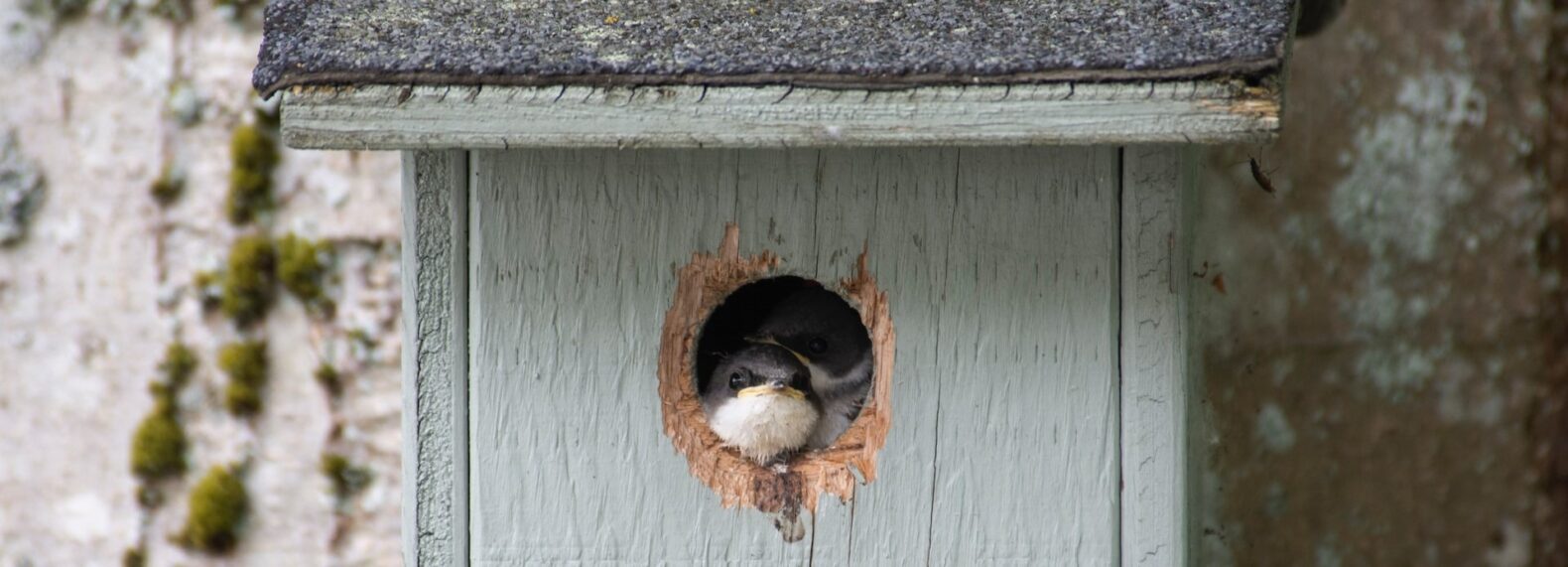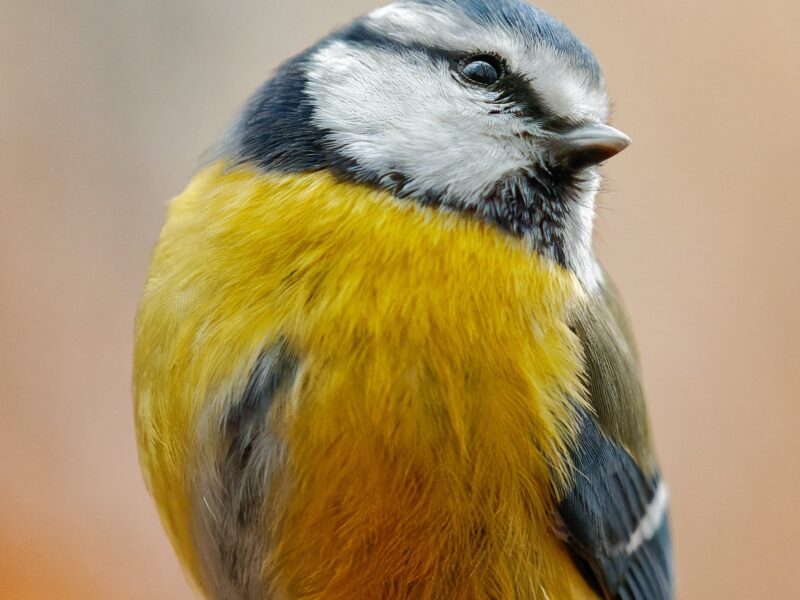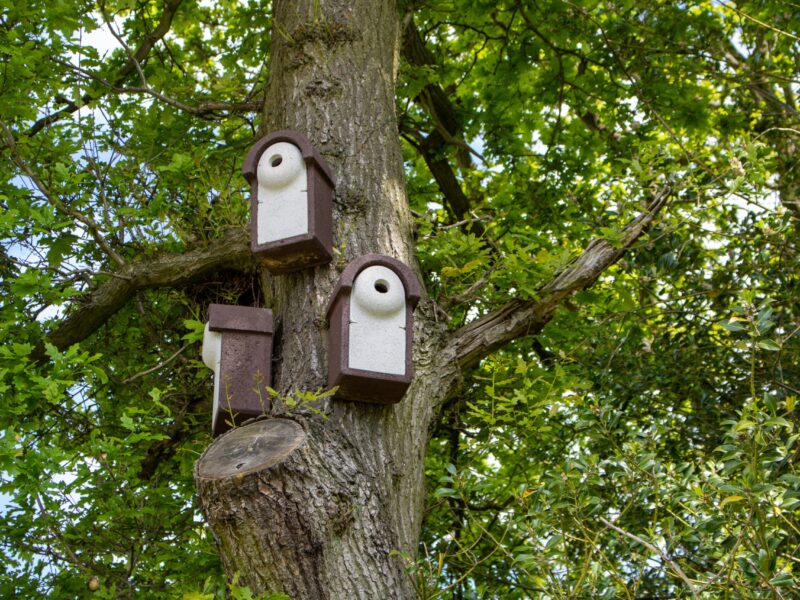Swift Response by idverde Teams Clears Trowbridge Road After Bin Lorry Fire
In a commendable effort, idverde teams played a crucial role in the cleanup operation
Grounds Maintenance, Landscape Creation, Arboriculture, Sports Surfacing, Parks management, IOS Managing Safely Training, Ecology & Biodiversity, Grass cutting, Horticulture, Street Cleaning, Soft Landscaping, Hard Landscaping
idverde provides a wide range of green services, including grounds maintenance, landscape creation, and advice services, to both private and public sectors across the UK.
idverde, in partnership with Wiltshire Council, have come together to advise the local community on top tips on installing nest boxes for birds this summertime. Interested in building nesting habitats in your back garden? Follow the tips discussed below to get the most out of your birdbox.
1. Not too close to another nest box – nest boxes of the same type should not be sited too close together as this may promote aggressive behaviour between neighbours.
2. Shelter your box from the weather – the front of the nest box should be angled vertically or slightly downwards to prevent rain from entering the nest box. Make sure it is sheltered from prevailing wind, rain and strong sunlight.
3. Height from the ground should be about 3 metres – small-hole boxes are best placed 1-3m aboveground on tree trunks, but avoid sites where foliage obscures the entrance hole – a clear flight path is important. If there are no trees in your garden, the next best option is to place your box on the side of a shed or wall. Care must be given to make sure the box isn’t easily accessible to predators.
4. Open-fronted nest boxes should be hidden from view – attach your box to a wall or fence that has shrubs and creepers growing against it.
5. Make sure cats cannot get into the box – ensure that it is not easily accessible to predators (cats and squirrels).
6. Consider a metal plate around hole to deter squirrels – this preventive measure that can be used to deter squirrels from gaining access. These plates are available commercially and can be purchased from any good garden centre or bird care company at very little cost.
7. Keep nest box away from bird feeders – as high levels of activity of visiting birds could disturb nesting pairs.
8. Use galvanized or stainless steel screws or nails that will not rust. If fixing boxes to trees, galvanised wire (use a piece of hose or section of car tyre around the wire to prevent damage to the tree) tie the box to the trunk or hang it from a branch. Make sure to regularly inspect these fittings to ensure the box remains securely attached. We appreciate that it may be unlikely that anyone will return to loosen the wire as the tree grows incrementally, so we suggest using aluminium nails. If the nail snaps or is occluded by the tree, it won’t cause too much damage to a chainsaw chain if the wood is cut through at some point in the future.
9. Traditionally, nest boxes for small birds are put up in the spring – pairs begin to prospect in the latter half of February, so a box put up at the end of the winter stands a good chance of attracting nesting birds. However, it is never too early or late to put up a nest box, as some birds will use them to roost in during the winter months.
10. Houses for house sparrows – a nest box with a 32mm entrance hole fixed on the wall of a house could well be used by House Sparrows. For Starlings try a box with a 45mm entrance hole.

When will I get birds in my nest box?
For many species using nest boxes, such as Blue Tit, Great Tit, House Sparrow and Kestrel, nest building will start in earnest in April, though you may see Blue and Great Tits visiting nest boxes as early as February to choose their mate and nesting location. If you have an open-fronted nest box for Robins, nest building can begin as early as February or March. Our Blue Tit Diary walks through the diary of an average Blue Tit during the breeding season.
Why isn’t my nest box being used?
There are many reasons why your box is not being used such as the presence of natural nest cavities nearby and the location of territory boundaries. Therefore, while some boxes may be taken up immediately, others may remain vacant, often for no apparent reason. If a box is not used for several years in succession it may be worth moving the box to a more suitable location.
Can I look inside my nest box?
For looking in, we would argue not to. Although when trained is technically fine (our experts do this when ringing nestlings) different species respond differently to disturbance and we believe it’s not worth the risk. Also we have known some people to get too enthusiastic and check frequently which then leads to desertion.
Should I clean out the nest box?
When the breeding season is over, old nests can be removed and the box cleaned out. Bird Protection Law permits the cleaning out of nests between 1 September and 31 January. We suggest November time as all will be done nesting by then. Any dead eggs must be destroyed promptly and cannot be kept or sold. Some hole-nesting species, including sparrows, may have second or third broods in the same nest. The nests of these species should be left until sometime during the autumn when it is certain that they are no longer in use.

